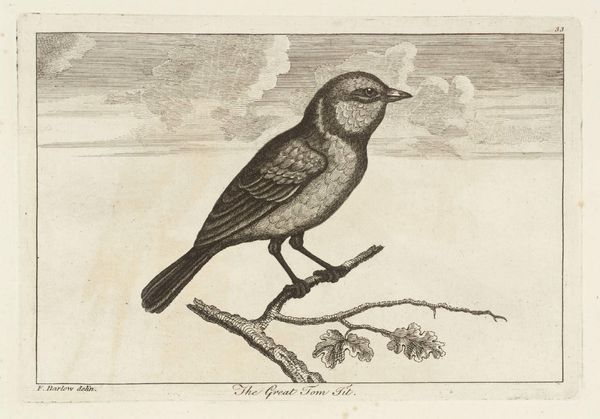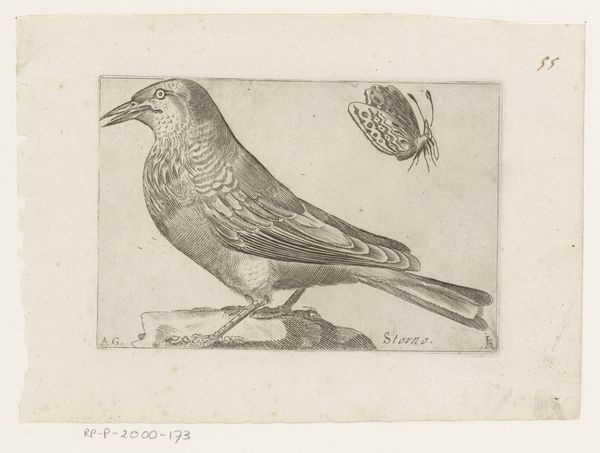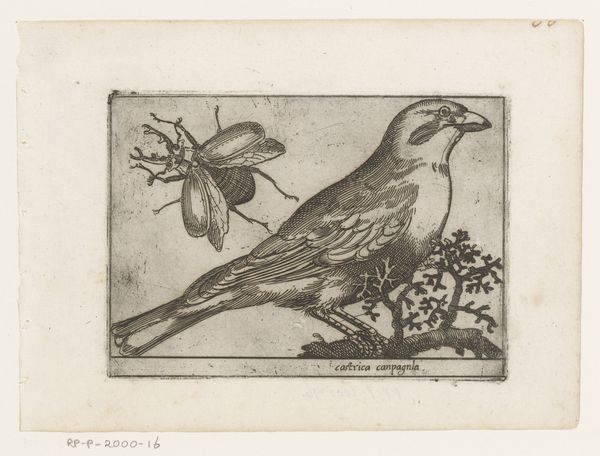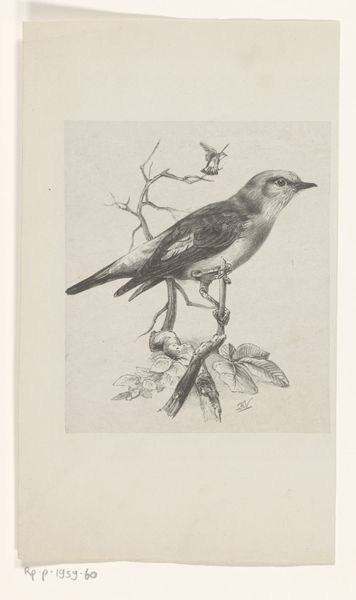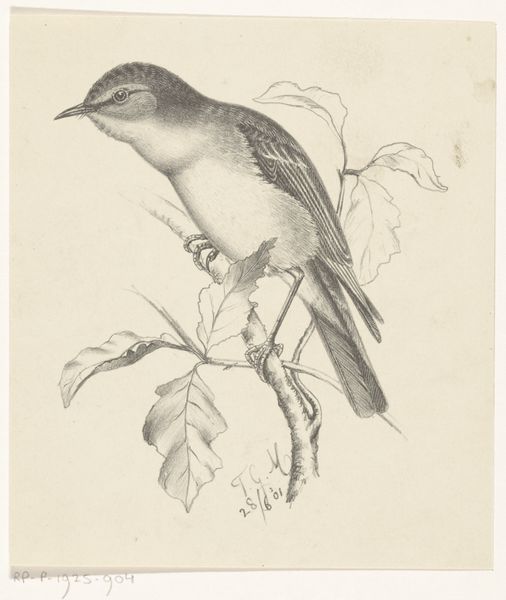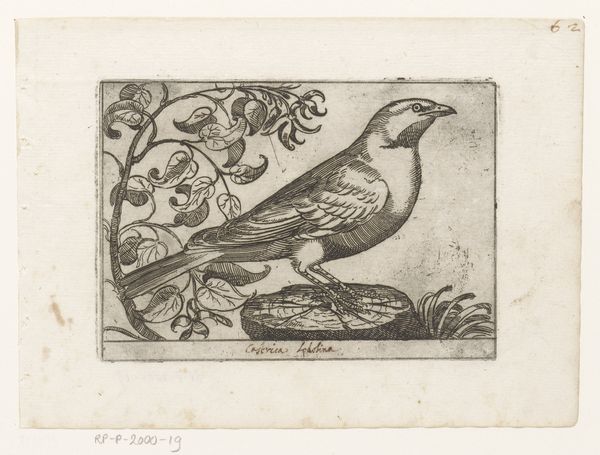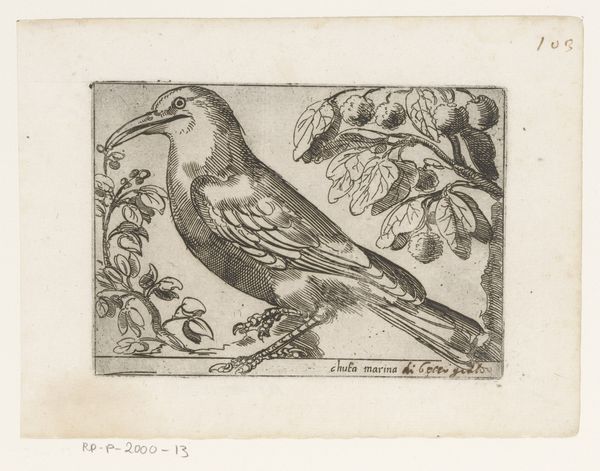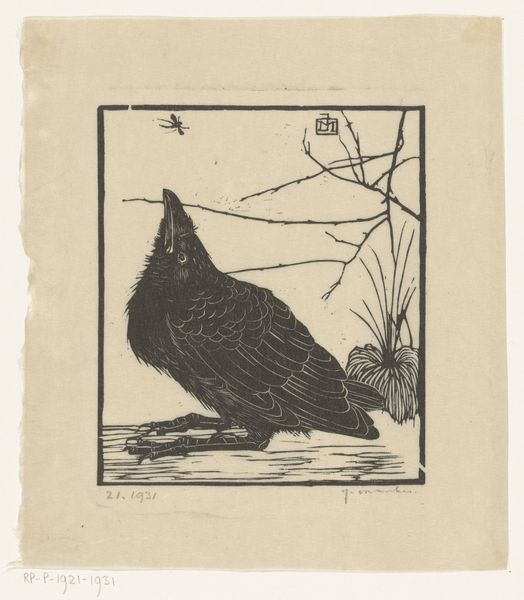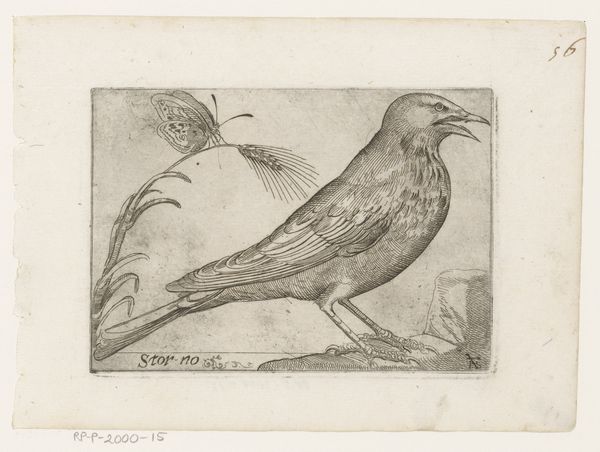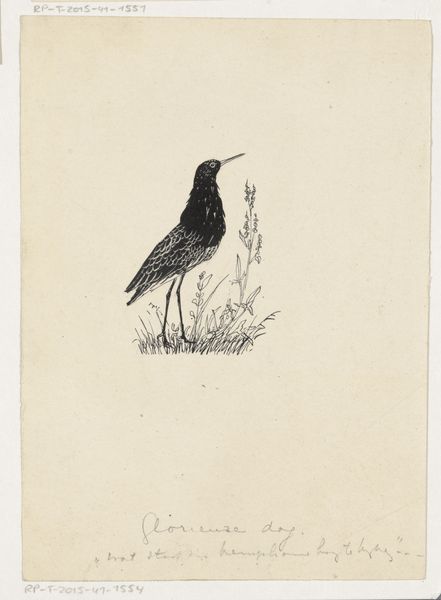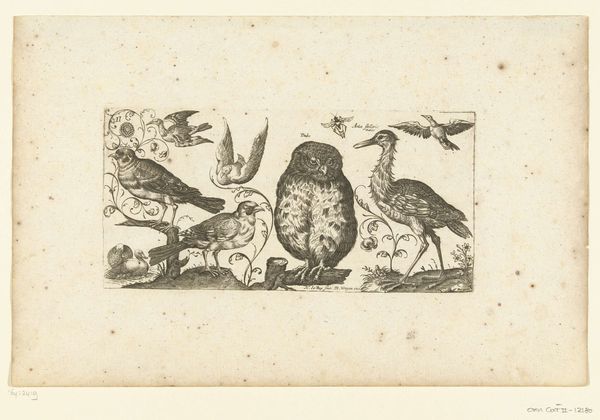
drawing, print, etching, engraving
#
pencil drawn
#
drawing
#
baroque
# print
#
etching
#
pencil sketch
#
landscape
#
bird
#
pencil drawing
#
engraving
#
realism
Dimensions: height 94 mm, width 102 mm
Copyright: Rijks Museum: Open Domain
Editor: Here we have Wenceslaus Hollar's etching, "Vlaamse gaai" from 1646. It's a beautiful, delicate rendering of a jay on a branch. The details are incredible, but I am curious what is the context for doing such a nature rendering? What do you see in this piece? Curator: What strikes me is the bird's assertive presence. While seemingly just a realistic portrayal, think about the context. It was a time of growing colonial expansion, a surge in what we now term "natural history," fueled by voyages and the classification of the natural world. How does this relate to the burgeoning capitalist system? Editor: So, you're suggesting this isn't just a pretty bird picture? Curator: Exactly. Hollar, like many artists of his time, was contributing to a larger project of understanding—and, I'd argue, controlling—the natural world. Consider the act of classifying this jay. What does it mean to capture, categorize, and represent a living creature? Is it not also a reflection of how Europeans viewed other cultures and lands as something to be similarly categorized and exploited? Think about power dynamics implicit in "discovery". Editor: That's a completely different way of looking at it! I was just appreciating the artistry. Now I am thinking about the bird as a symbol of broader historical trends. Curator: And that tension, that push and pull between aesthetic appreciation and critical analysis, is where art history gets really interesting. Editor: I learned to consider the artwork from a new lens, thanks. Curator: Indeed! And by interrogating even seemingly simple images, we can unearth complex layers of history and ideology.
Comments
No comments
Be the first to comment and join the conversation on the ultimate creative platform.

